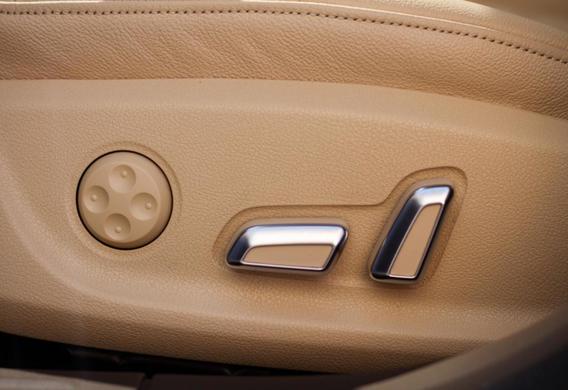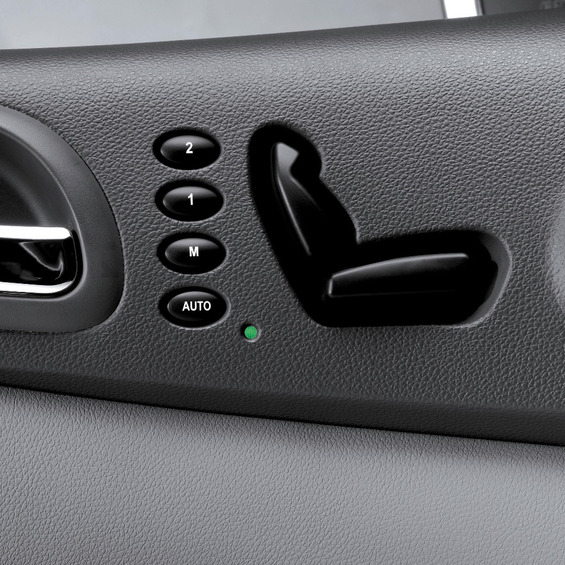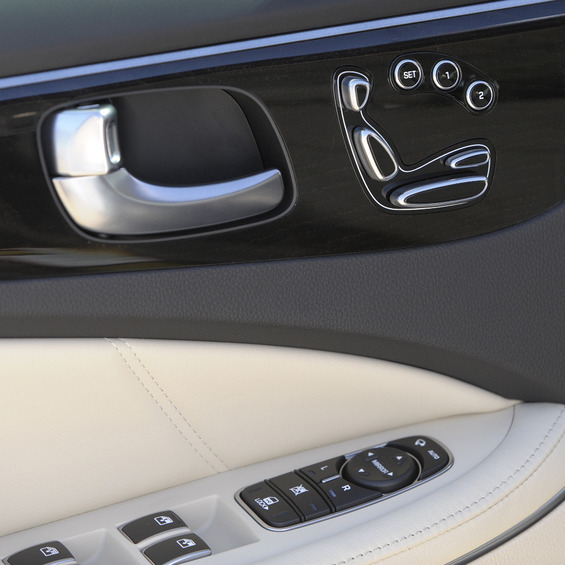
Many drivers and passengers spend quite a lot of time in the passenger car, so they should be comfortable behind the wheel. Proper landing is the key to successful driving habits. If the body position is correct, the physical load is reduced and the review is improving.
In the old days, when almost all of the cars were driven by domestic cars, the question was often: how is the seat right if the growth or weight does not allow the factory adjustment of the seat position? This problem is no longer relevant today: car seats are equipped with a huge number of adjustments, so that the driver of any growth and complement can find the most convenient position for itself.
When did the car seats become adjustable?
The first vehicles were equipped with fixed, solid sofas. The famous Rolls Royce Silver Ghost, which debuted in 1907, did not have separate seats in its splendor. Such sofas for the driver and passengers were only softness and plating material. Another famous car with similar sofas is the Chevrolet Impala.
The appearance of cars intended for races has helped to strengthen the positions of the split seats. This type of machine was used exclusively for separate seats, which were capable of permanently locking the driver when steering at high speeds. Serial vehicles have improved their dynamic performance over time, so that separate seats were also required for them.
Only in the early 70s of the last century engineers poned over the adjustment system of these seats. And, as it usually is, it was worth the idea that it started to evolve and modernize. The number of seats in the seat has steadily increased: it is possible to adjust the seat height seat to the steering wheel, seat back angle and so on. Initially all actions were to be performed manually. Many modern motor vehicles have electromechanical adjusters.

Design considerations for a driver's seat
The modern driver's seat has its own suspension. The seat structure consists of the base and the top. The top of the driving seat shall be connected to the base by two guide rollers and step striker. It's a reminder of the traction of the train and the rail, only with the amendment that the rails are equipped with the snouds for fixation.
The upper part of the seat consists of the frame to which the cushion and the back are attached. The back may be whole or composite.
It is possible to increase comfort by installing the hydraulics of the armchair: the frame is installed on the mechanism of the eyelash and hydraulic shock absorber. The sprout mechanism is also regulated by rigidity. The function of this mechanism is to extingule the movement on the uneven road. This is carried out through the application of the hydraulic shock absorber.

Levelling devices
The longitudinal movement shall be effected by moving the seat to the fixed rails. The position of the chair is fixed on the table-it may be in the form of a handle or lever. When it is raised, the chair can be moved forward or backward along the rails, and when it is released, it will be locked.
The height-change mechanism is fixed to the floor. Several levers are used which are installed in such a way as to reduce the driver's effort to lift the chair. The control is handled by the handle of the drive. Most of the time, it's in the shape of a gears. A snoring mechanism is used to capture the position.
Seat back may also change the angle of inclination. Its position is fixed by the arms of the arms of the buckets located on both sides of the back. As a general rule, all position regulators have a similar shape and seat on the side of the seat. If the back is composite, the upper part can be adjusted separately. Additional adjustments are also made on many vehicles:
- the angle of the cushion,
- flight cushion,
- height and flight support.
Lumbar support is a roller in the seat back. It can be moved in the height and in the longitudinal direction. The explanatory support, along with the shoulder, is meant to ensure a comfortable position for the driver's back and reduce the chance of injury in the event of an accident.

The car seat folding system has been in existence for a long time. The rear passenger seats were the first to start. The seat-back system has a mechanism that can be compared to the folding sofa mechanism. This option can increase the amount of space within a car. The salon is combined with the luggage compartment. The folding can also be the seat of the front passenger. This is often used in two-and three-door vehicles with rear seats for easy landing and landing.
Special attention must be paid to the head restraint. It has been applied since the middle of the last century, and for modern cars is a mandatory requirement. The head restraint serves as a protection against damage to the neck during the collision and is adjusted to the height by hand. Some motor vehicles also have a head restraint adjustment function.
Electrical adjustments
Of course, the seat adjustment was not without electromechanical actuators. The design of the regulators has not changed much, only mechanical drives have been replaced by electromechanical devices. You can control the location by using the buttons on the dashboard or in the chair.
Also, with the advent of electronics, the function of remembering the chair's configuration appeared. A board computer records the selected seat position settings and can return the original settings after manual changes.

Mercedes-Benz cars are installed on their vehicles by the most advanced systems. The German manufacturer's modern multicontour chairs are equipped with air cameras, which allows the car seat to be driven under the driver and passengers individually. Air cells are placed under a seat upholstery and include side rolloins in the seat cushion, lumbar support, side rolbars in the seat back, shoulder support. The level of filling of the air chambers is determined by the use of the piezovalves.









